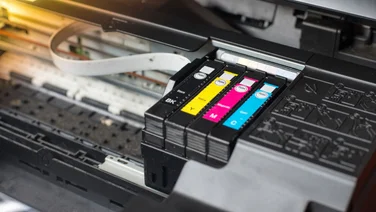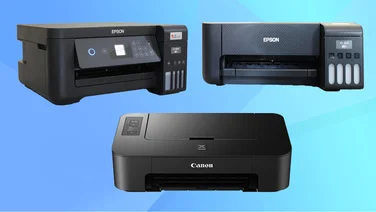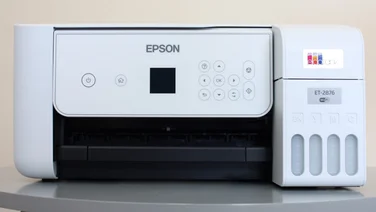To help us provide you with free impartial advice, we may earn a commission if you buy through links on our site. Learn more



Lexmark’s Genesis S805 doesn’t look like any MFP we’ve ever seen before. Head on, you’re presented with a massive touchscreen panel that makes the all-in-one a pleasure to interact with. It takes up more vertical space than most MFPs and also has a large footprint, making it one of the bulkier home inkjets around. There’s just one paper tray at the back, which has a rather limited capacity of 100 sheets and is somewhat prone to jamming. Like most high-end consumer MFPs, the Genesis has USB, Ethernet and Wi-Fi connectivity, plus an integrated fax.

The touchscreen provides easy access to the MFP’s copying and faxing features, as well as making it easy to scan to a USB flash drive, associated PC or email. The printer comes pre-installed with apps to make it easy to print photos from Facebook and scan ID cards. More apps are available online, including templates for printing sheet music and convenient access to your Picasa account.
As well as providing a home for the Genesis’ fancy interface, the front panel pulls forward to leave you staring down the barrel of the scanner’s lens. The scanner is rather unusual; it uses digital camera technology rather than a traditional CCD or CIS scan head. This allows it to carry out incredibly fast three-second preview scans but also limits it to a maximum resolution of 300x300dpi. This is fine if you just want to fax the odd document or put a photo on the web, but it may not be up to the demands of amateur artists or photographers. The scanner interface is extremely basic, but functional enough for a 300dpi scanner.

The Genesis goes out of its way to make everything as automated and efficient as possible. Multi-page documents are duplexed by default, the scanner automatically generates a preview image of anything on the platen, and the printer attempts – with varying success – to auto-detect the size and type of paper you load into it.
When you scan or copy anything, you’re prompted to select whether you want to add another page. The page you’re currently copying will be left in situ while you decide, and if you add any extra pages, they’ll automatically be duplexed on to the back of it, which is great for paper saving. Unfortunately, if the Genesis detects a paper jam or similar error while copying, it can leave you stuck on the ‘copying cancelled’ screen, with no way of returning to main menu.

In addition to the odd paper jam, the Genesis still suffers many of the problems of its plainer siblings. Print quality is acceptable in most instances, with sharp, dark text at normal quality settings and vivid, even colour prints. However draft text is pale, and both colour and mono copies are a little fuzzy. Print speeds are pretty good all round, with 15.2ppm draft test, 10.3ppm normal quality text and a reasonable colour text speed of 2.4ppm. A page of mono text costs only a little above average at 3.3p per page, but a mixed-colour page costs a whopping 9.5p.
We really wanted to like the Genesis – its stand-alone touchscreen interface is the best we’ve ever seen on a printer and a three-year warranty is always welcome. Unfortunately, with mediocre print quality, a low-resolution scanner and a tendency to jam, the hardware just isn’t up to the promise of the interface. Don’t forget the high price, either. Ultimately, the Canon Pixma MG6250 is cheaper and better.





